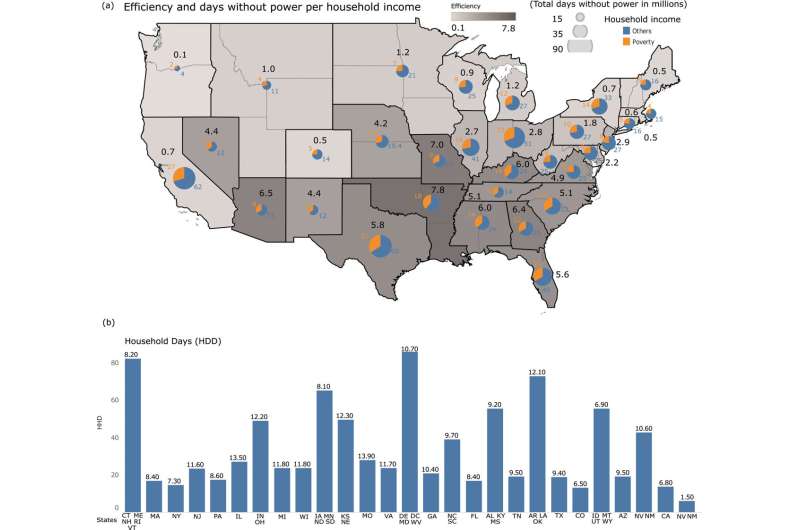Earth’s Future, DOI: 10.1029/2021EF002434″ width=”800″ height=”530″/>
Household air conditioning use in the United States. Bar graphs show the predicted change in kilowatt-hour consumption per household, by state, as global climate crosses 1.5 degrees Celsius (blue) and 2.0 degrees Celsius (pink) thresholds above preindustrial temperature averages. States shaded darker grey over the map of the contiguous United States consumed more air conditioning during the baseline period from 2005-2019. Grey shading over the map of the contiguous United States shows baseline air conditioning consumption in kilowatt-hours per household, by state, from 2005-2019. Credit: Obringer et al 2021 Earth’s Future, DOI: 10.1029/2021EF002434
Climate change will drive an increase in summer air conditioning use in the United States likely to cause prolonged blackouts during peak summer heat if states do not expand capacity or improve efficiency, according to a new study of household-level demand.
The study projected summertime usage as global temperature rises 1.5 degrees Celsius (2.7 degrees Fahrenheit) or 2.0 degrees Celsius (3.6 degrees Fahrenheit) above preindustrial levels, finding demand in the United States overall could rise 8% at the lower and 13% at the higher threshold. The new study was published in Earth’s Future, AGU’s journal for interdisciplinary research on the past, present and future of our planet and its inhabitants.
Human emissions have put the global climate on a trajectory to exceed 1.5 degrees Celsius of warming by the early 2030s, the IPCC reported in its 2021 assessment. Without significant mitigation, global temperatures will likely exceed the 2.0-degree-Celsius threshold by the end of the century.
Previous research has examined the impacts of higher future temperatures on annual electricity consumption or daily peak load for specific cities or states. The new study is the first to project residential air conditioning demand on a household basis at a wide scale. It incorporates observed and predicted air temperature and heat, humidity and discomfort indices with air conditioning use by statistically representative households across the contiguous United States, collected by the U.S. Energy Information Administration (EIA) in 2005-2019.
The new study projected changing usage from climate influence only, and did not consider possible population increases, changes in affluence, behavior or other factors known to affect air conditioning demand.
“We tried to isolate just the impact of climate change,” said Renee Obringer, an environmental engineer at Penn State University and lead author of the new study. “If nothing changes, if we, as a society, refuse to adapt, if we don’t match the efficiency demands, what would that mean?”
Technological improvements in the efficiency of home air conditioning appliances could supply the additional cooling needed to achieve current comfort levels after 2.0 degrees global temperature rise without increased demand for electricity, the new study found. Increased efficiency of 1% to 8% would be required, depending on existing state standards and the expected demand increase, with Arkansas, Louisiana and Oklahoma on the high end.
“It’s a pretty clear warning to all of us that we can’t keep doing what we are doing or our energy system will break down in the next few decades, simply because of the summertime air conditioning,” said Susanne Benz, a geographer and climate scientist at Dalhousie University in Halifax, Nova Scotia, who was not involved in the new study.

